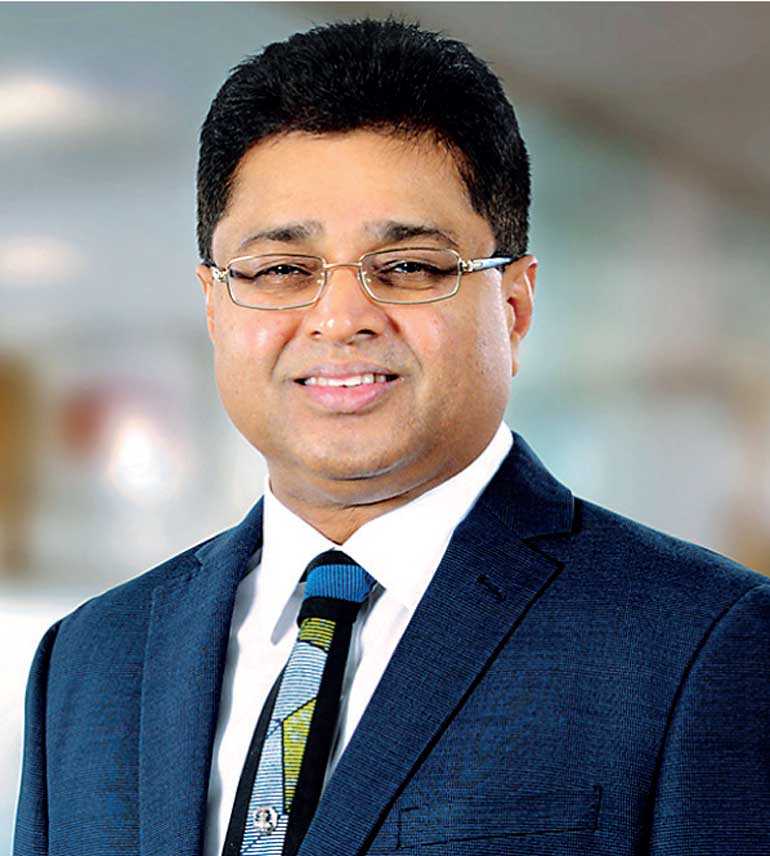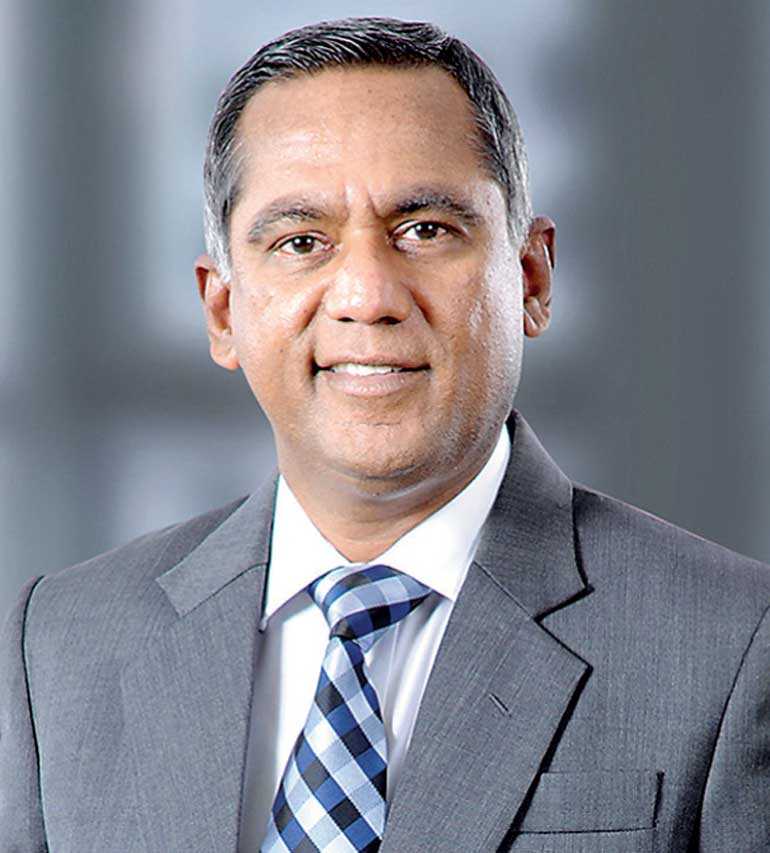Monday Jan 06, 2025
Monday Jan 06, 2025
Wednesday, 14 November 2018 00:00 - - {{hitsCtrl.values.hits}}
 Sampath Bank Chairman Channa Palansuriya
Sampath Bank Chairman Channa Palansuriya
 Sampath Bank Managing Director Nanda Fernando
Sampath Bank Managing Director Nanda Fernando
Sampath Bank achieved Rs.14.2 billion in Profit Before Tax (PBT) within the first three quarters of 2018, 20.3% higher than the PBT of Rs.11.8 billion recorded in the corresponding period in the previous year. This is a significant achievement particularly given the challenging macroeconomic conditions that were seen throughout this period.
Profit After Tax (PAT) too grew by 13.6% YoY to reach Rs. 9.6 billion for the nine months ended 30 September 2018, as against the Rs. 8.5 billion reported for the corresponding period in the previous year.
Meanwhile the Sampath Bank Group, which comprises of the Bank and four fully owned subsidiary companies, also posted strong results, with Group PBT and PAT for the nine months ended 30th September 2018 growing by 19.8% and 13.2% respectively over the results reported for the corresponding period in the previous year.
Fund-Based Income (FBI)
Net Interest Income (NII), the main source of income of the bank which accounts for more than 71% of the total operating income, recorded an increase of Rs. 6.7 billion (32.8%) over the corresponding period in 2017. Accordingly, NII for the first three quarters of 2018 amounted to Rs. 27.2 billion, as against Rs. 20.5 billion recorded for the corresponding period in the previous year.
This achievement was made possible thanks to a steady 13.1% (annualised 17.4%) growth in the bank’s advance base, being the result of timely re-pricing of asset and liability products and other fund management strategies adopted by the bank throughout 2018.
Non Fund-Based Income (NFBI)
Net fee and commission income, which largely comprises of credit, trade, card and electronic channel related fees increased to Rs. 7.3 billion during the period under review, as opposed to Rs. 5.9 billion recorded during the corresponding period in 2017. The notable YoY growth of 24.0% is largely due to the steady growth in advances, expansion of credit card operations and the success of innovative value additions.
Other operating income too recorded a YoY increase of 124% for the period under review, led mainly by an increase in realised exchange income. Consequently, other operating income and net gain from financial investments for the first nine months of 2018 stood at Rs. 5.4 billion, compared to Rs. 2.5 billion reported for the corresponding period.
Notably however, the bank recorded a net trading loss of Rs. 1.4 billion during the nine months ended 30 September 2018 in contrast to the gain of Rs. 291 million recorded in corresponding period (decline of 593%).
Operating expenses
Operating expenses of the bank which stood at Rs.12.2 billion for the first three quarters of 2017, increased to Rs. 14.1 billion during the period under review, reflecting a YoY increase of 15.2%. This increase was mainly due to higher personnel expenses triggered by salary increments. Other overheads for the period also increased, in part due to general price hikes.
Notwithstanding these increases however, the bank’s Cost to Income ratio excluding VAT and NBT on financial services declined to an all-time low of 36.7% in the first three quarters of 2018 from 42.0% reported for the corresponding period in 2017, a notable improvement of 530 basis points.
Impairment charges on loans and receivables
While the entire banking industry is witnessing a sharp increase in NPAs amidst significant collection and debt recovery challenges across most sectors of the economy, the construction sector followed by the agriculture sector appear to be the main contributors towards the increase in NPLs.
The troubles experienced by the construction sector were largely from long delays in receiving dues for completed projects, while the agriculture sector continued to underperform due to adverse weather conditions experienced in previous year.
In this backdrop, Sampath Bank’s NPA ratio increased to 4.25% as at 30 September 2018, an increase of 2,610 basis points from the 1.64% reported at the end of December 2017. Furthermore, the total impairment charge for the nine months ended 30 September 2018, increased to Rs. 6.6 billion, mainly on account of the increase in individual impairment charge by Rs. 3 billion. In addition, the collective impairment charge also increased by Rs. 1.6 billion.
Business growth
Sampath Bank’s total asset base grew by 12.0% (annualised 16.0%) during the period under review to reach Rs. 890 billion as at 30 September 2018, up from Rs. 795 billion as at 31 December 2017. Gross loans and receivables grew by 13.1% (annualised 17.4%) to hit Rs. 647 billion as at 30 September, growing by Rs. 75 billion for the nine-month period.
The total deposit base too increased by Rs. 46 billion for the same period, to reach Rs. 676 billion as at the reporting date, a growth of 7.3% (annualised 9.7%). Meanwhile at 33.7%, the CASA ratio as at 30 September 2018 showed a decline compared to the 34.9% registered 31 December 2017. The decline can be attributed to the higher growth recorded in the fixed deposit base.
Performance ratios
ROE (after tax) declined from 23.35% as at 31 December 2017 to 17.46% by 30 September 2018 as the average equity base increased following two Right Issues, Rs. 12.5 billion in April 2018 and Rs. 7.6 billion in November 2017. ROA (before tax) also declined slightly to 2.24% as at 30 September 2018 from 2.29% reported in end December 2017.
Nonetheless the Statutory Liquid Asset Ratio (SLAR) for the Domestic Banking Unit and the Off-Shore Banking Unit was maintained at 21.17% and 24.28% respectively as at 30 September 2018, while the bank’s SLAR stayed well above the mandatory requirement of 20% throughout the period.
Capital adequacy
CBSL introduced Basel III to the Sri Lankan banking industry with effect from 1 July 2017. The full implementation would take place in three phases over a period of 18 months and is targeted to be completed by 1 January 2019, at which point being a ‘systemically important bank,’ Sampath Bank would need to maintain its Tier I Capital Adequacy Ratio (CAR) at 10% and Total CAR at 14%.
In order to fall in line with these new regulatory requirements, Sampath Bank raised Rs. 12.5 billion worth of Tier I Capital by way of a Rights Issue in April 2018 and Rs. 7.5 billion worth of Tier II Capital by way of a Basel III Compliant Debenture issue in March 2018.
Sampath Bank maintained its Tier I Capital and Total Capital Adequacy ratios at 11.88% and 15.92% levels respectively, as at 30 September 2018. Both ratios stood well above the minimum regulatory requirement of 8.875% and 12.875% respectively, applicable as at the reporting date.